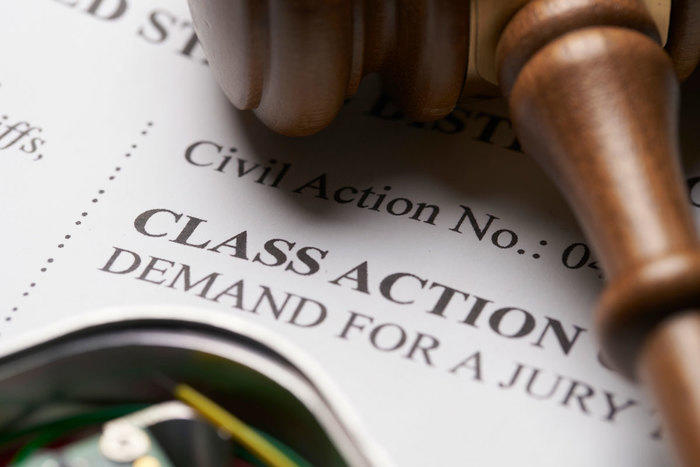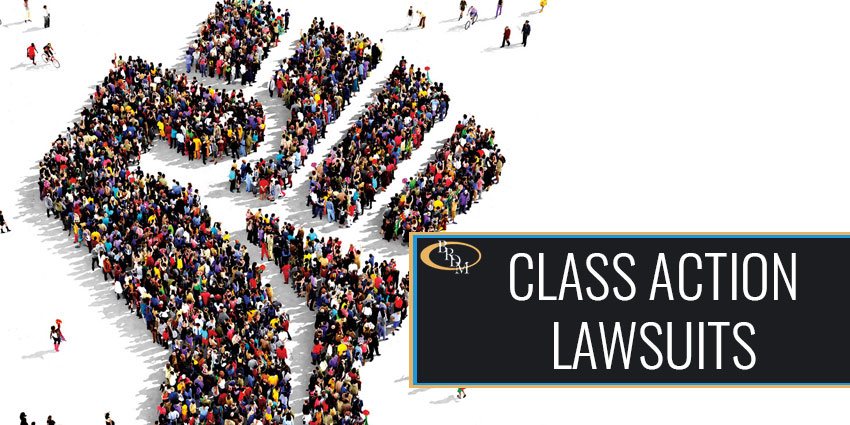Recognizing Your Civil Liberties: A Comprehensive Guide to Class Action Lawsuits
Wiki Article
Comprehending Class Activity Legal Action: An Overview for Attorney
Course activity claims have actually ended up being an integral component of the lawful landscape, enabling the combination of multiple claims into a single action. For lawyers, understanding the complexities of class activity lawsuits is vital in successfully representing their customers. This extensive guide discovers the principles of class action legal actions, from recognizing prospective class participants to browsing the accreditation process. In addition, it digs into key approaches for handling class activity litigation and provides understandings into acquiring and negotiating authorization for negotiations. By delving into the ins and outs of class action legal actions, this guide equips legal representatives with the understanding and tools required to successfully browse this complex location of law.The Basics of Class Activity Legal Actions
Class action claims are a lawful mechanism utilized to settle similar claims from a team of people right into a single claim, giving a efficient and economical method to looking for justice and resolution. This kind of lawsuit allows a representative complainant, acting upon part of the whole class, to bring a claim against an accused that has actually allegedly caused damage or breached the legal rights of numerous individuals.The standard needs for bringing a course activity claim consist of numerosity, commonness, typicality, and competence of depiction. Numerosity describes the reality that the course must be so large that joinder of all members would be unwise. Commonality implies that there should be typical concerns of legislation or truth that are shared by all members of the class. Typicality requires that the claims of the representative plaintiff are typical of the claims of the whole course. Last but not least, competence of depiction makes sure that the depictive plaintiff will sufficiently stand for the rate of interests of the entire class.
Class activity suits can be useful for both offenders and plaintiffs. For accuseds, it supplies the opportunity to effectively resolve several cases in a single suit, staying clear of the need to protect versus countless individual claims.
Identifying and Assessing Possible Course Participants
After establishing the fundamental demands for a course activity lawsuit, the next action is to recognize and assess potential class members. This procedure entails determining who may be part of the course and reviewing their claims to identify if they satisfy the essential criteria.To identify potential class members, lawyers normally perform extensive research and collect appropriate information. This may include evaluating files, carrying out interviews, and analyzing records to identify people or entities that might have been influenced by the supposed misdeed. It is important to establish a clear and extensive list of possible course members to guarantee that all affected events are consisted of in the suit.
As soon as prospective course participants have been recognized, the next action is to evaluate their claims. If they meet the lawful requirements for course certification, this entails assessing the merits of each private case to identify. Legal representatives need to carefully assess the facts, proof, and lawful theories of each prospective class member's case to guarantee that they have a feasible situation.
Assessing prospective course members additionally includes determining whether they satisfy the class interpretation and have experienced similar damage as a result of the offender's actions. This needs contrasting the truths and situations of each potential class participant's circumstance to the accusations and legal concepts presented in the claim.
Browsing the Course Certification Process
To effectively browse the course qualification procedure, lawyers should carefully stick to the step-by-step needs stated by the court. Class certification is an important action in a course action lawsuit, as it identifies whether a situation can continue as a class activity, standing for a team of people that have similar insurance claims against an accused. The process includes satisfying particular requirements, such as numerosity, commonality, typicality, and adequacy of representation.First of all, lawyers have to develop numerosity by demonstrating that the class is so huge that private joinder is unwise. This needs an extensive analysis of the defenses and cases involved.
Next, legal representatives need to show typicality, which suggests that the representative complainant's insurance claims are typical of the insurance claims of the class participants. This guarantees that the passions of the representative complainant line up with the passions of the class. Lastly, attorneys must show adequacy of depiction, implying that the depictive plaintiff and their advice will rather and appropriately represent the passions of the class.
To browse this this article procedure successfully, attorneys have to thoroughly prepare by carrying out extensive research study, collecting proof, and developing a compelling disagreement that pleases each of these standards. They should likewise be prepared to react to any kind of arguments or obstacles elevated by the defendant. By vigilantly adhering to the step-by-step needs set forth by the court, attorneys his response can increase their opportunities of obtaining course accreditation and advancing the passions of the class participants.

Key Strategies for Taking Care Of Course Action Lawsuits
Upon efficiently navigating the course qualification process, lawyers should after that apply essential methods for effectively handling course activity litigation. These techniques are critical to ensure that the situation continues efficiently and successfully, ultimately maximizing the possibilities of a desirable outcome for the class participants.
One trick strategy is to establish a solid and natural lawful team (Class action lawsuit). This includes constructing a group of lawyers with know-how in class activity litigation, in addition to other pertinent areas such as the particular sector or subject matter associated with the instance. A versatile team can bring different perspectives and skills to the table, enhancing the overall effectiveness of the litigation
Another important strategy is to develop a well-thought-out and extensive litigation strategy. This strategy must detail the general goals of the case, as well as the specific lawful concepts and disagreements that will click here for more info be pursued. It needs to additionally include a timeline and budget to ensure that the instance remains on track and within the allocated resources.
Additionally, legal representatives must actively involve with the course members throughout the lawsuits procedure (Class action lawsuit). This includes providing normal updates on the development of the instance, seeking input and comments from the class participants, and attending to any type of concerns or concerns they might have. By fostering open interaction and collaboration, legal representatives can develop trust and assistance among the course members, which can be critical in achieving an effective resolution
Clearing Up Class Activity Claims: Negotiation and Authorization
When it comes to clearing up class action lawsuits, efficient arrangement and acquiring authorization are vital actions in accomplishing a resolution. Course action claims are intricate and include a huge number of plaintiffs, making it critical to reach a settlement that is adequate and reasonable to all parties included.
When a negotiation arrangement is gotten to, it must be approved by the court. The court's role in this process is to guarantee that the settlement is fair, affordable, and appropriately protects the interests of the class members. The court will consider factors such as the nature of the claims, the strength of the evidence, the potential recovery for the class participants, and any kind of objections elevated by course participants.
Getting court authorization is vital as it supplies finality to the negotiation and protects the interests of the course participants. It makes certain that the negotiation is binding and enforceable, and class members can obtain their rightful settlement.
Verdict

Class activity lawsuits have actually become an essential component of the lawful landscape, allowing for the combination of numerous insurance claims into a solitary action. Class qualification is an important step in a course action claim, as it identifies whether an instance can proceed as a course action, representing a team of individuals that have similar insurance claims versus a defendant. By faithfully adhering to the step-by-step needs set forth by the court, legal representatives can enhance their opportunities of obtaining course qualification and advancing the passions of the course members.
The court will certainly take into consideration elements such as the nature of the cases, the strength of the evidence, the prospective recuperation for the class members, and any type of arguments raised by class members.
By recognizing and assessing potential course participants, lawyers can figure out the stability of a class action lawsuit.
Report this wiki page